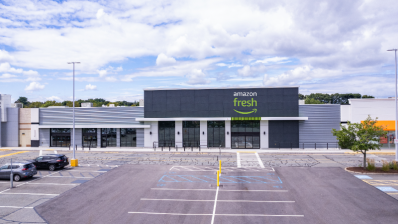The capitalization, or 'cap' rate is a term that is used frequently when discussing real estate asset sales and purchases. The cap rate is a ratio of two variables '“ net operating income and the current value or sale price of a property '“ which helps to determine the potential return on an investment. Another way to contemplate the cap rate is that it is the rate at which the net operating income recapitalizes the asset value on an annual basis.
Capitalization Rate = Net Operating Income (NOI) / Current Market Value (or Sale Price)
For example, if an investment group buys an apartment property in Los Angeles with an annual NOI of $1,000,000 for $20 million the cap rate is 5%:
$1,000,000 / $20,000,000 = 5%
Also, as noted above, the asset is producing 5% of its value in income every year. At this rate, the asset will pay for itself in 20 years.
How are cap rates used?
Cap rates are used in various ways when analyzing real estate investments. Investment groups use cap rates internally to compare and contrast investment opportunities. For example, that same investment group can spend that $20 million to buy the Los Angeles apartment building at a 5% cap rate. Or, it may consider spending $14 million to buy a shopping center in Kansas City at a 7% cap rate and the remaining $6 million to buy an industrial building in Minneapolis at a 6.5% cap. There are a number of other factors that go into those real estate decisions, but on a purely numbers basis, the investment group can weigh the pros and cons of buying one asset in a top market that will deliver a 5% return, or buy two different assets in smaller cities with a higher blended return of 6.85%.
Cap rates also are used as a benchmark to gauge industry trends across asset classes related to pricing. In that regard, cap rates can show supply and demand and what buyers are willing to pay for properties and over time, they can be useful to discern patterns or breakouts.
As an illustrative example, the following graph produced by Market Realist, does an excellent job of comparing historical cap rates across five major asset classes from 2010 '“ 2015:
As the graph clearly depicts, cap rates across all asset classes compressed, on average, about 160 basis points from Q1 2010 to Q1 2015. The takeaway from this first point is to know that if you purchased any real estate asset in Q1 2015, you accepted a lower yield (i.e. NOI is a lower percentage of purchase price) compared to what you would have received in Q1 2010. The vastly improved economic conditions in 2015 vs. the near abyss of 2010 may have well justified the lower yield (we will cover this topic in a future article on risk-adjusted returns) but it is a fact nonetheless.
In addition, amongst the five major asset classes, another takeaway is that, as of Q1 2015, multifamily assets were trading at cap rates that were 60 basis to 120 basis lower than other asset classes. Again, your opinion might have been that the desirability of multifamily assets more than justified this spread but the fact remains that, if you invested in a multifamily project in Q1 2015, you accepted a lower yield than you could have obtained by investing in a similar quality retail or office project.
What else do I need to know?
While cap rates are a good metric to compare and contrast different investment opportunities, as well as a good measure of market trends it is important to note that not everyone calculates NOI in the same way. Some investors use 12-month trailing income while others will make assumptions based on predictions of higher income in the next 12 months. This is referred to as trailing vs. forward-looking cap rates. Altering these assumptions can produce radically different cap rate results. In some respects, this discrepancy partially explains why investors are willing to pay very low cap rates of below 4%. When accepting a sub 4% cap rate, the investor is less focused on the trailing cap rate and, instead, is targeting a substantially higher forward-looking cap rate. That investor has likely underwritten the acquisition with an expectation that they can boost NOI by raising rents or lease current vacancies. This future improved cap rate is referred to as the 'stabilized cap rate'.
Conversely, the purchase price may not be a direct reflection of the NOI that supports it. Suppose a suburban office building requires significant capital improvements. That office building might sell for a lower price since the next buyer will need to invest a large sum into those capital improvements upon acquisition simply to retain the current tenants at current rents (rather than improve the property to increase rents). In that scenario, a higher cap rate is justified compared to a similarly situated office that does not have major deferred maintenance issues even if the NOI is the same for each.
In short, the cap rate is a useful tool that is often used alongside other criteria to assess real estate investment opportunities and draw conclusions across asset classes. Keep in mind that understanding how NOI relates to cap rates is critical in utilizing cap rates as a resource as well as understanding that cap rates are an estimated return that can change over time.


